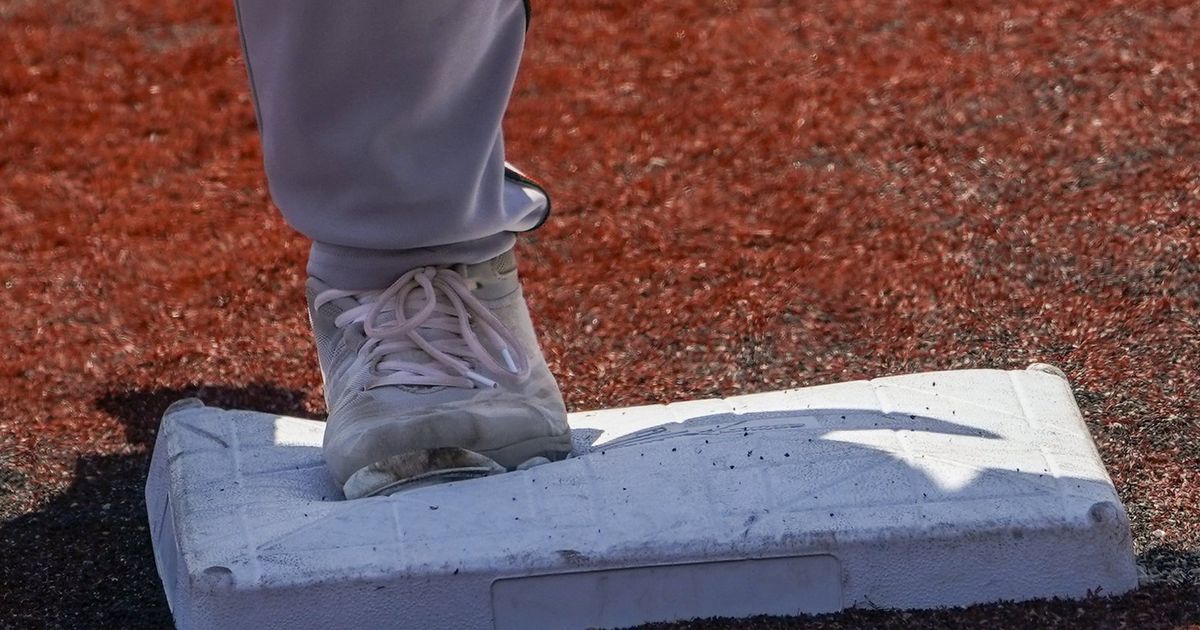
Mariners have mixed reactions to MLB’s new pitch clock, defensive shift restrictions
Marco Gonzales is no fan of the pitch clock, for several reasons.
“I just don’t think it’s necessary,” the Mariners’ veteran left-hander said Friday afternoon, a few hours after MLB announced it would adopt three significant rule changes for 2023, including the strict implementation of a pitch clock.
MLB’s Joint Competition Committee voted 6-4 to adopt the new rules — with the six owners on the committee, including the Mariners’ John Stanton, in favor and the four players opposed — in an effort to improve pace of play in the game.
The rule changes also include a ban on defensive shifts and bigger bases, which MLB expects to create more action on the basepaths and increase overall offensive production.
Pitchers, starting next season, will have 15 seconds between pitches to “begin his motion” to throw, and 20 seconds with runners on base.
Gonzales is skeptical.
“I think we’re going to end up rushing certain situations in the game that don’t need to be rushed,” he said. “When we have a full count with runners on second and third, I think we were going to hate it. You’re just not going to be able to rush hitters back in the box; you’re not going to be able to rush pitchers back on the mound. And I think we’re going to feud with umpires a lot more than we already are.”
The players’ union issued a statement after MLB’s announcement Friday:
“Player leaders from across the league were engaged in on-field rules negotiations through the Competition Committee, and they provided specific and actionable feedback on the changes proposed by the Commissioner’s Office. Major League Baseball was unwilling to meaningfully address the areas of concern that Players raised, and as a result, Players on the Competition Committee voted unanimously against the implementation of the rules covering defensive shifts and the use of a pitch timer.”
Mariners hitters generally had a more favorable reaction to the new rules.
“I think it should be good. It should create more offense,” said second baseman Adam Frazier, adding that shorter games should help players’ ability to rest and recover physically.
Ty France said there will be an obvious adjustment period for everyone next season.
“The hardest part,” France said, “will be getting used to the pitch clock. I don’t think a lot of guys will have issues with, but a handful will. It’s a learning curve. Do I think it will hurt baseball? No. Do I think provide a little more offense? We’ll see how that goes. But overall, I think they’ll be all right.”
Over the past year, MLB has tested the proposed rule changes in some 8,000 minor-league games. The pitch clock, according to MLB, has reduced minor-league game times, on average, by about 26 minutes.
The average nine-tinning MLB game in 2022 takes 3 hours, 7 minutes. That’s 11 minutes longer than the average game in 1997, and offense is down nearly one full run (0.94) per game over the past 25 years.
“The game is going to continue to keep evolving, and it should,” Mariners manager Scott Servais said. “We’re not the only game in town anymore. Haven’t been for quite some time. You look at the things they do in the NBA, the things that have changed in the NFL, changes in the NHL. You’re trying to make it more fan-friendly.
“We’re in the entertainment business. So you want to keep the game moving and keep the action (going) and highlight the athletic players that you have out on the field.”
Some details on the pitch clock for pitchers:
- They must begin motion before timer expires;
- They may disengage the rubber (timer resets) twice per plate appearance without penalty (count resets if runner advances);
- Subsequent disengagements result in a balk, unless an out is recorded on a runner.
Pitch clock details for batters:
- They must be in the batter’s box and alert to the pitcher with at least eight seconds remaining;
- They are allowed one timeout per plate appearance.
The new bases will be 18 inches square (compared to the current 15 inches square).
Restrictions on the defensive shift mean that teams must have all four infielders on the infield — cleats on the dirt — when the pitcher is on the rubber, with two infielders on each side of second base.
This rule does not preclude a team from positioning an outfielder in the infield or in the shallow outfield grass in certain situations. But it does prohibit four-outfielder alignments.
“We’ve tried to address the concerns expressed in a thoughtful way, respectful — always — of the history and traditions of the game, and of player concerns,” MLB Commissioner Rob Manfred said in a news conference. “Our guiding star in thinking about changes to the game has always been our fans. ‘What do our fans want to see on the field?’ We’ve conducted thorough and ongoing research with our fans, and certain things are really clear. Number 1, fans want games with better pace. Two, fans want more action, more balls in play. And three, fans want to see more of the athleticism of our great players.”